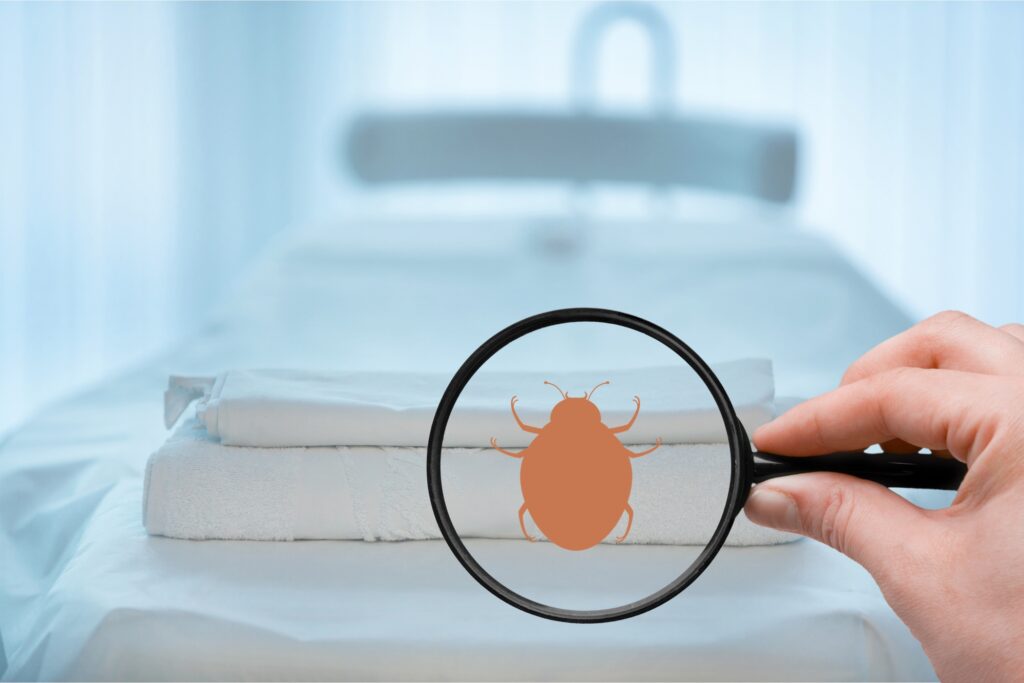Homes, hotels, and businesses have been plagued by bed bugs, those tiny nocturnal pests that feed on human blood for centuries. Their resilience and stealthy nature make them a formidable adversary, but homeowners and pest control professionals have devised numerous strategies and treatments to combat them. Chemical and heat treatments are the two primary contenders in the war against these tiny invaders. In this blog, we’ll explore the vast array of preparation options available to tackle bed bug infestations, highlighting the contradictions between chemical treatments and the relative ease of heat treatments.
The Bed Bug Epidemic
The rise of bed bugs in recent years can be attributed to factors such as limited public awareness, resistance to commonly used pesticides, and increased international travel. Infestations can rapidly escalate, causing economic losses, distress, and discomfort.

Bed Bug Preparation Options
Before diving into the debate of chemical treatments versus heat treatments, let’s first examine the preparation options shared by both methods. Proper preparation is crucial to ensure the effectiveness of any bed bug treatment.
Declutter the Infested Area:
- Remove unnecessary clutter, including items under the bed, closets, and floors. Bed bugs thrive in cluttered environments, so reducing hiding spots is crucial.
Prepare Personal Items:
- Remove personal items such as toys, electronics, and pets from the treatment area. These items can be inspected and treated separately if necessary.
- If you have pets, remove them from the treatment area and follow any specific instructions your pest control professional provides for their safety.
Additional Tips for Missouri residents:
- Inform your bed bug specialists from Columbia, Missouri and surrounding areas of any specific areas of concern, recent travel history, or suspected hiding spots for bed bugs.
- Follow any pre-treatment instructions your bed bug control company provides, which may include specific guidelines for preparing your home.
- Be prepared to vacate the premises during the treatment process, as some treatments may require you to leave for a few hours to ensure your safety.
- Consider washing and treating any personal items you cannot clean in a washing machine, such as shoes, bags, or delicate clothing, according to your pest control company guidance.
Now, let’s delve into the contradictions between chemical and heat treatments.
Bed Bug Chemical Treatments
Chemical treatments involve the application of insecticides to kill bed bugs. While these treatments can be effective, they come with several contradictions and downsides:
- Resistance: Bed bugs have developed resistance to many common pesticides, rendering them less effective. This resistance has led to the need for more potent and potentially harmful chemicals.
- Chemical Exposure: Using pesticides involves occupants’ exposure to potentially toxic chemicals. It is a significant concern, especially for households with children, pets, or individuals with chemical sensitivities.
- Multiple Treatments: Chemical treatments often require multiple applications, as they may only eliminate some bed bugs and their eggs in a single treatment. It prolongs the infestation ordeal.
- Preparation: Preparing for chemical treatments can be arduous. Residents must move furniture, remove pets, and vacate the premises for some time, causing considerable disruption to daily life.

Bed Bug Heat Treatments
Heat treatments, on the other hand, offer a contrasting approach:
- Easiness and Speed: Heat treatments are relatively simple and fast. Professionals use specialized equipment to raise the temperature in the infested area to a level lethal for bed bugs. It eliminates bed bugs at all life stages in a single treatment, often in a matter of hours.
- Non-Chemical: Heat treatments are chemical-free, making them a safer option for occupants. There is no need to worry about harmful pesticide exposure.
- Effectiveness: Heat treatments are highly effective, even against pesticide-resistant bed bug populations. The consistent heat application penetrates deep into cracks and crevices, where bed bugs hide, ensuring comprehensive eradication.
- Minimal Preparation: Compared to chemical treatments, the preparation for heat treatments is minimal. You don’t need to move furniture or leave your home for an extended period. It reduces disruption and stress.
When it comes to fighting bed bugs, there are different options. One popular approach is to use chemicals, but this method has some drawbacks, such as resistance to pesticides, exposure to chemicals, and the need for multiple treatments. An alternative that has gained popularity in recent years is heat treatments, which are faster, more convenient, and chemical-free.
Ultimately, the best choice will depend on individual circumstances and preferences. However, heat treatments have a proven track record of success and are attractive for those looking for a quick and efficient solution. Regardless of the chosen method, thorough preparation is essential to defeating these persistent pests. If you live in Missouri, contact Midwest Bed Bug Services for more information on which bed bug treatment in Columbia is best for you.






